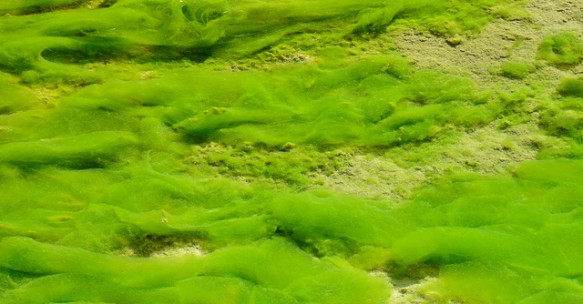
Fresh research into climate benefits of algae
By using a combination of satellite imagery and laboratory experiments, researchers now have evidence showing that viruses infecting algae are driving the life-and-death dynamics of algae’s blooms, even when all else stays essentially the same.
According to results reported in the Cell Press journal Current Biology and part funded by the European Research Council, a single North Atlantic algal bloom, about 30km in radius, converted 24,000 tonnes of carbon dioxide from the atmosphere into organic carbon via a process known as carbon fixation. Two-thirds of that carbon turned over within a week as that bloom grew at a very rapid rate and then quickly met its demise. A closer look at those algae revealed high levels of specific viruses infecting their cells.
Assaf Vardi, of the Weizmann Institute of Science in Israel, says that this patch of ocean fixes about as much carbon as an equivalent patch of rainforest and then almost immediately turns much of it over.
Important questions remain about the ultimate fate of all the carbon taken in by algal blooms, the researchers say; much of it is probably recycled back into the atmosphere by bacteria. Yet it’s also possible that the virus-infected algae release sticky sugars and lipids, leading their cells and the carbon within them to sink faster to the ocean floor.
Vardi says: “If the latter scenario is true, it will have a profound impact [on] the efficiency of carbon dioxide ‘pumping’ from the atmosphere to the deep ocean. This carbon will then have a better chance [of being] buried in the ocean sediment.”
The findings will improve models that predict the future of algal blooms and their impact on climate. They also serve as a reminder that sometimes it really is the little things that matter.






